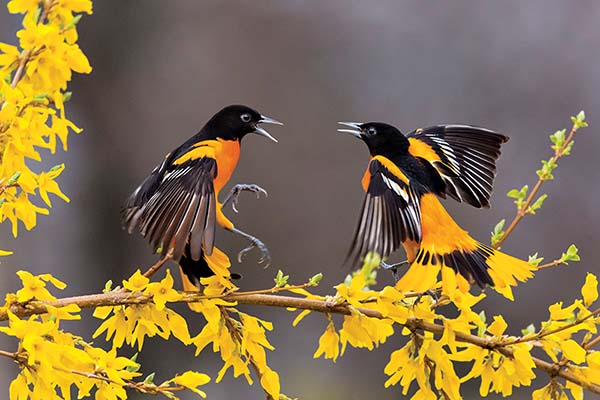
Audubon Adventures

Background for Teachers
 Climate change is a phenomenon that is affecting life on Earth in increasingly apparent ways. It is a complex “adult” issue that increasingly enters into the realm of children’s lives. We at Audubon Adventures believe serious topics like this are important for children to understand as fully as possible. Like learning about the workings of earthquakes, the study of habitats, and news of severe weather, issues that affect the environment belong in the classroom. The environment is a topic rich in science and geography, as well as history. One challenge for educators today is that the long-term, global process of climate change is happening even as we’re trying to understand and address its causes and consequences. Another challenge is that children can develop fear and anxiety as a result of the threat and consequences of climate change they read about, hear about, and even see. For these reasons, preparing yourself with the latest and most authoritative information will help you prepare students for the future they will inherit. Toward that end, this essay has these objectives:
Climate change is a phenomenon that is affecting life on Earth in increasingly apparent ways. It is a complex “adult” issue that increasingly enters into the realm of children’s lives. We at Audubon Adventures believe serious topics like this are important for children to understand as fully as possible. Like learning about the workings of earthquakes, the study of habitats, and news of severe weather, issues that affect the environment belong in the classroom. The environment is a topic rich in science and geography, as well as history. One challenge for educators today is that the long-term, global process of climate change is happening even as we’re trying to understand and address its causes and consequences. Another challenge is that children can develop fear and anxiety as a result of the threat and consequences of climate change they read about, hear about, and even see. For these reasons, preparing yourself with the latest and most authoritative information will help you prepare students for the future they will inherit. Toward that end, this essay has these objectives:
- Provide basic “nuts and bolts” information about climate change. Some of this you may already know, but we offer it to provide the most comprehensive information for the broadest audience of educators.
- Provide up-to-date information about what science is telling us about the evidence for and effects of climate change.
- Provide resources and information about the kinds of actions that are needed to address climate change on an individual, community, state, regional, national, and global basis.
- Provide resources to help educators address this challenging topic with young people.
A Climate Change Primer
Climate vs. Weather
People are often confused about exactly what climate change is. One source of confusion is the difference between weather and climate. It’s not uncommon to hear someone blame an unusually hot day on global warming or dismiss the reality of climate change based on an early heavy snowfall. Heat waves and atypical snowstorms are temporary weather phenomena. Years of increasingly higher average temperatures or severe weather over a large region point to climate change.
It Starts with the Energy Cycle
Our planet runs on energy. Energy is defined as the ability to do work, to make something happen. Energy allows flowers to bloom, birds to sing, cars to move, televisions and lights to turn on, and the wind to blow. We—and all living things—wouldn’t exist without energy.
Earth runs on energy, and most of that energy originates from the sun, which lights the planet and heats land, water, and air. Warming caused by sunlight makes the wind blow and ocean currents circulate. Energy from the sun also powers solar cells and wind turbines to produce electricity. Solar energy is the basis of the planet’s carbon cycle, where energy flows from the sun to plants to animals. Plants turn solar energy into carbohydrates (e.g., sugars and starches) through photosynthesis, and in the process they absorb carbon dioxide from the atmosphere and release oxygen. Animals—including humans—eat the sugars and starches stored in plant tissues and require oxygen to convert carbohydrates into energy to move and grow. This conversion is called cellular respiration. So, plants absorb carbon dioxide and release oxygen and animals absorb oxygen and release carbon dioxide. When plants and animals die and decompose, the energy returns to the ground or oceans. Burning releases it back into the atmosphere.
Fossil Fuels = Warming Planet
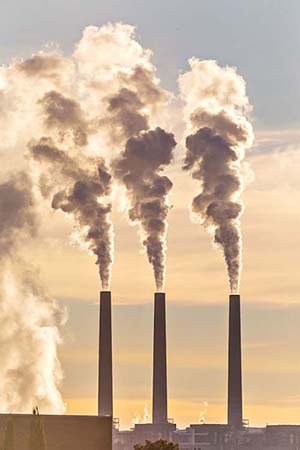 Burning fossil fuels is a main cause of climate change. Just as we exhale carbon dioxide during cellular respiration, burning coal, oil, and natural gas releases carbon dioxide. Carbon dioxide is the main contributor to the “greenhouse effect,” in which solar energy reaches the Earth’s surface but the resulting heat is prevented from escaping back into outer space. Burning fossil fuels that release carbon dioxide into the atmosphere has caused Earth’s average temperature to rise faster than ever before in recorded history. July 2019 was the hottest month on record for Planet Earth. The five hottest years, globally, occurred in the five years from 2014 to 2018. This increase in global average temperature is why we call it global warming. That warming trend, in turn, affects other aspects of climate, such as precipitation, storm patterns and the severity of storms, and so on. Taken together, those changes are referred to as climate change.
Burning fossil fuels is a main cause of climate change. Just as we exhale carbon dioxide during cellular respiration, burning coal, oil, and natural gas releases carbon dioxide. Carbon dioxide is the main contributor to the “greenhouse effect,” in which solar energy reaches the Earth’s surface but the resulting heat is prevented from escaping back into outer space. Burning fossil fuels that release carbon dioxide into the atmosphere has caused Earth’s average temperature to rise faster than ever before in recorded history. July 2019 was the hottest month on record for Planet Earth. The five hottest years, globally, occurred in the five years from 2014 to 2018. This increase in global average temperature is why we call it global warming. That warming trend, in turn, affects other aspects of climate, such as precipitation, storm patterns and the severity of storms, and so on. Taken together, those changes are referred to as climate change.
Electricity is a convenient way to distribute energy to homes, stores, factories, offices, and other buildings throughout the world, and much of it is generated by power plants burning fossil fuels. Burning these fuels to produce electricity is directly responsible for climate change as well as contributing to air pollution. Coal-burning power plants emit 2.5 billion tons of carbon dioxide to the atmosphere each year, making them the number one source of atmospheric carbon in the United States. Gas-powered vehicles are number two, adding nearly 1.5 billion tons of carbon dioxide.
Science Is Telling Us Climate Change Is Real
Scientists have been warning about climate change for more than 30 years. The United Nations Intergovernmental Panel on Climate Change (IPPC) was created in 1988 and released its first report in 1990. In September 2019 various United Nations agencies, including the IPPC, released several reports about climate change prepared by a consortium of scientists from around the world. The reports paint a vivid picture of the ways climate change is affecting our planet now—from melting glacier ice and rising sea levels to warming seas and damage to coral reefs to collapsing ocean ecosystems and record-breaking temperatures, storms, floods, droughts, and fires.
Birds Are Telling Us It’s Time to Take Action
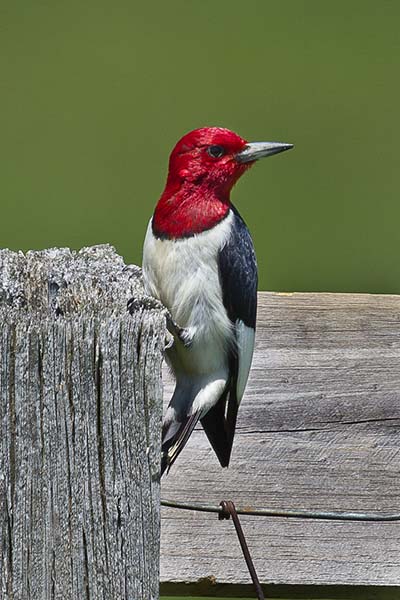 In October 2019 the National Audubon Society released a rigorously researched report titled Survival by Degrees: 389 Bird Species on the Brink. Audubon’s approach combined years of observational data on the abundance of bird species with the climate models used by more than 800 experts in 80 countries to map where each bird species studied can live under a changing climate. The report shows how already-documented evidence and the predicted progression of climate change will have profound consequences for the large majority of North American birds. The startling finding is that 65 percent (389 out of 604) of North American bird species are at risk of extinction from climate change. These threats include sea-level rise; stronger storms; more frequent droughts and fires; changes in the timing of seasonal availability of food sources; and the changing distribution of plants and other animals caused by global warming. This means that birds could run out of places to live and food to eat. Those consequences can be extrapolated to extend, in varying degrees and in varying timeframes, to other wildlife, plants, and people as well.
In October 2019 the National Audubon Society released a rigorously researched report titled Survival by Degrees: 389 Bird Species on the Brink. Audubon’s approach combined years of observational data on the abundance of bird species with the climate models used by more than 800 experts in 80 countries to map where each bird species studied can live under a changing climate. The report shows how already-documented evidence and the predicted progression of climate change will have profound consequences for the large majority of North American birds. The startling finding is that 65 percent (389 out of 604) of North American bird species are at risk of extinction from climate change. These threats include sea-level rise; stronger storms; more frequent droughts and fires; changes in the timing of seasonal availability of food sources; and the changing distribution of plants and other animals caused by global warming. This means that birds could run out of places to live and food to eat. Those consequences can be extrapolated to extend, in varying degrees and in varying timeframes, to other wildlife, plants, and people as well.
There Is Still Time
These eye-opening reports from Audubon and IPPC also make it clear that actions taken now and going forward can forestall the worst consequences of climate change and secure a healthy planet for human populations and other living things and their habitats. Audubon’s science includes the good news that if we take action now we can help improve the chances for 76 percent of the bird species identified as being at risk. There are things individuals and families can do to reduce their contributions to greenhouse emissions. These include using energy-efficient automobiles and mass transit, adopting energy-saving habits and using energy-efficient appliances at home and work, reducing the use of single-use plastics, and saving water. Individuals, families, and communities can also protect the places birds and other living things need now and in the future—in their own yards as well as community-wide. These actions are very important. They are not sufficient, however.
Protecting life and living conditions on Earth requires worldwide and economy-wide actions—in other words, action by governments and commercial enterprises at all levels and in all sectors: the generation of electricity, agriculture, transportation, commercial and residential buildings, and industrial processes. These actions for addressing the underlying causes as well as the current and projected consequences of climate change include:
- adopting policies that reduce energy use and the demand for energy, especially from fossil fuel-based sources;
- replacing on a wide scale and wherever possible the use of fossil fuels with 100 percent clean, renewable energy sources;
- adopting building practices for residential and commercial properties that protect against rising seas, increased flooding, and more frequent and more powerful storms;
- adopting as a matter of policy natural solutions to protecting communities from rising sea levels, floods, and storms—for example, protecting and increasing marshlands along coasts and rivers.
These actions are obviously beyond the capabilities of individuals, but individuals can and must be instrumental in seeing that they happen. This problem requires, above all, the concerted, dedicated, coordinated, and unwavering commitment of people to support governments, commercial enterprises, and other institutions to adopt policies and practices to protect them, all other living things, and their shared home, Planet Earth. This is where the most potent weapon for fighting climate change comes in. That weapon is a combination of knowledge and communication. Science and the documented observations and experiences of those already affected give us the knowledge. Communication is the part that is in the hands—the voices and actions—of everyone. It includes sharing knowledge about climate change and expressing the expectation that those with power to make the large-scale, system-wide commitments and changes required will do that essential job.
Audubon Resources
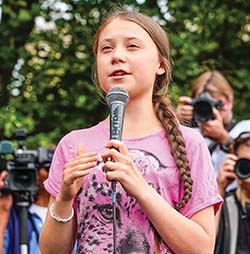 Audubon has created an online zip-code-based tool that allows users to visualize effects on bird populations in their specific neighborhoods or states under different scenarios. Audubon has also created a resource titled Your Guide to Climate Action for taking the first steps against the climate crisis and amplifying individual efforts to make lasting change.
Audubon has created an online zip-code-based tool that allows users to visualize effects on bird populations in their specific neighborhoods or states under different scenarios. Audubon has also created a resource titled Your Guide to Climate Action for taking the first steps against the climate crisis and amplifying individual efforts to make lasting change.
Helping Children Understand Climate Change
Children hear talk everywhere, from the classroom to the family dinner table to TV and the movies. Events that threaten the health of our environment on a large scale are a topic of great concern even for adults. For children, they can be terrifying. Parents and teachers report children being upset, even crying, over stories of the harm climate change is doing or could do to animals, habitats, and even people. “Climate anxiety” is the term used to describe this experience. Without support, children are left to use their limited experience and child-size knowledge (and fears) to grapple with something powerful and potentially overwhelming. Children may have unrealistic expectations about their individual responsibility for and ability to affect the outcome of these problems, and they often need extra support to understand how it fits into their own lives.
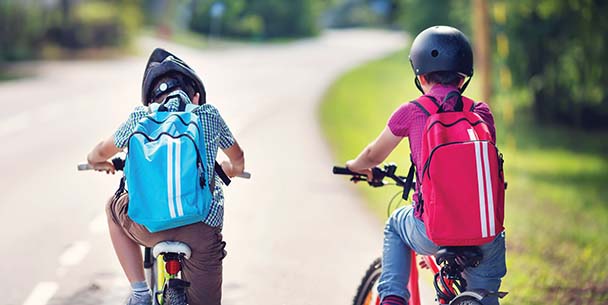
Audubon wants children to understand the dual nature of environmental problems: People cause them; people can take steps to prevent and remedy them. In other words, yes, there’s trouble, but there’s also hope for the future because we are smart and we are on the case.
Here are some simple recommendations that can help you talk with children about climate change:
- Give children the facts. The facts may be sobering, but they can help dispel unrealistic fears and expectations. Learn as much as you can about the topic on your own. Besides the Audubon Adventures student magazine “Let’s Change Climate Change,” see the Audubon Adventures Naturalist’s Bibliography for other sources of child-appropriate information on the topic.
- Focus on action and hope rather than despair. Help children understand that the actions of individuals in their daily lives (such as, walking more/driving less and otherwise using less fossil-fuel-based energy, using less plastic, recycling, and so on) do make a difference when they’re added to the actions of millions of other individuals. Encourage them to record and celebrate the positive steps they do take.
More Guidance Regarding Children and Climate Change
- These resources can help you, and you might want to share them with students’ families.
- Parents: https://www.parents.com/parenting/better-parenting/advice/how-to-talk-to-your-kids-about-global-warming/
- National Education Association: http://www.nea.org/climatechange
- National Geographic: https://www.nationalgeographic.com/family/talking-to-your-kids-about-climate-change/
- Scholastic Parents: https://www.scholastic.com/parents/family-life/global-awareness/communicate-your-kids-about-climate-change.html
- NBC Today Show: https://www.today.com/parents/how-talk-children-about-climate-change-t162981
- New York Times: https://www.nytimes.com/2019/06/27/science/climate-change-children-education.html
- Rainforest Alliance: https://www.rainforest-alliance.org/articles/how-to-talk-to-kids-about-climate-change
Photos: (t to b) TK Patricia Monteiro; ingimage; Kempter/iStock; DougVonGausig/iStock.





